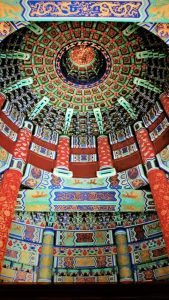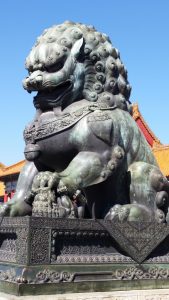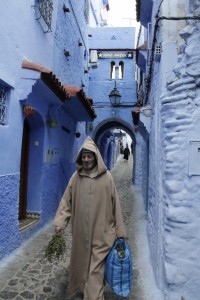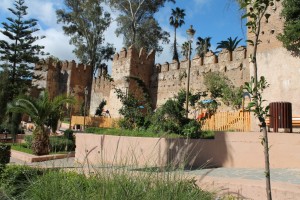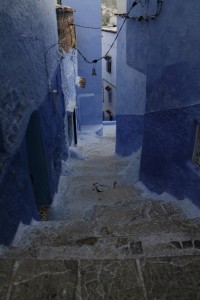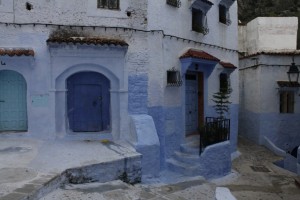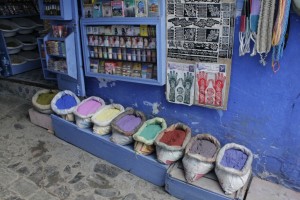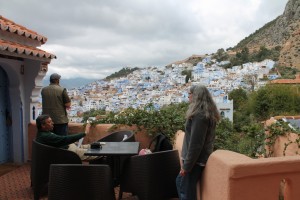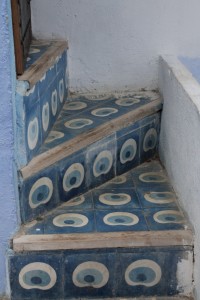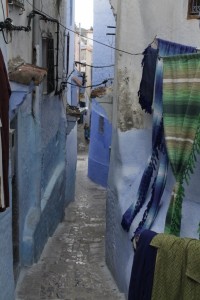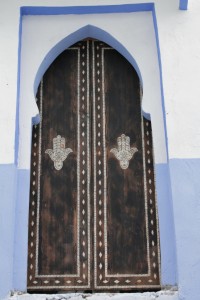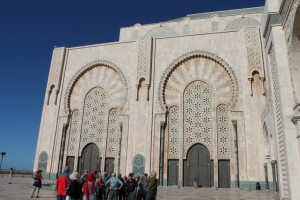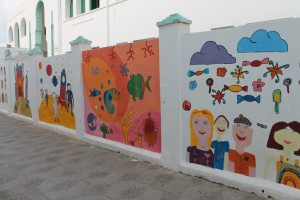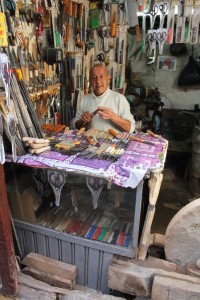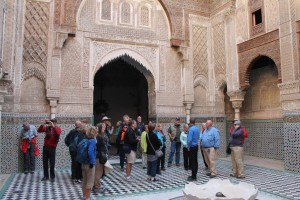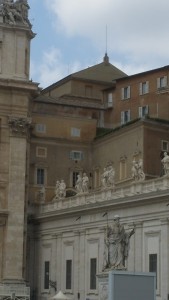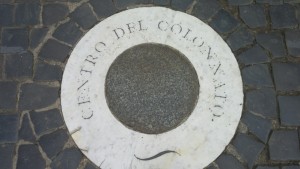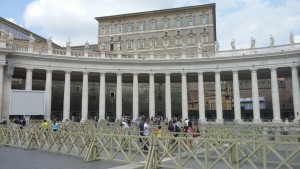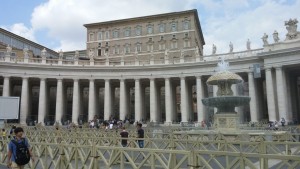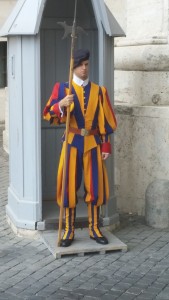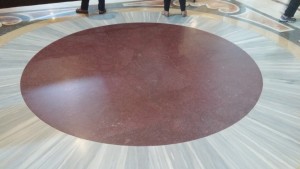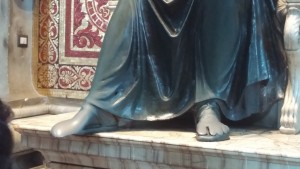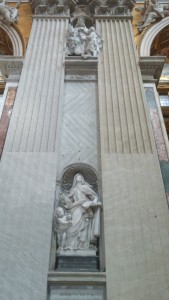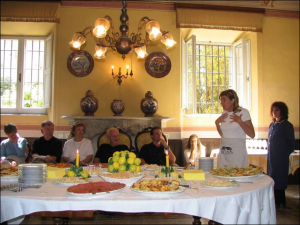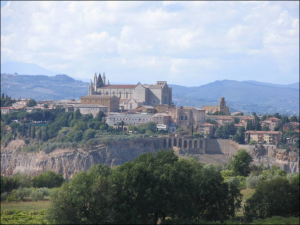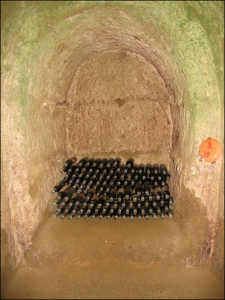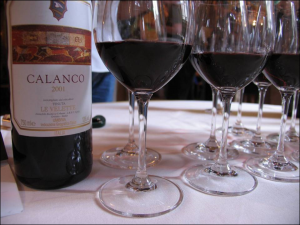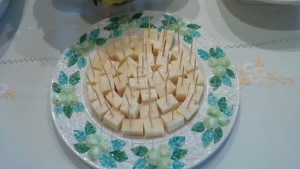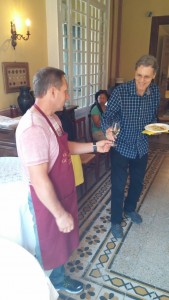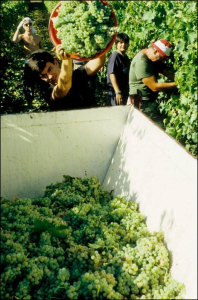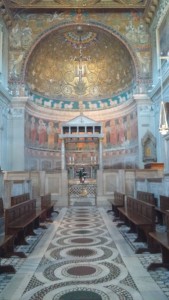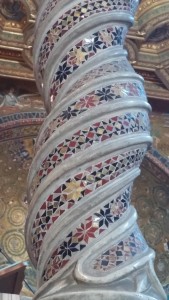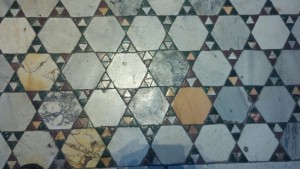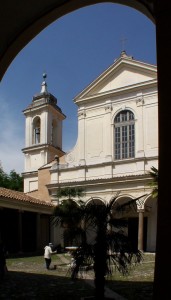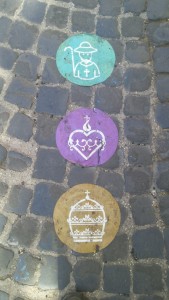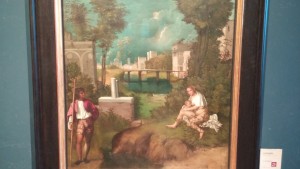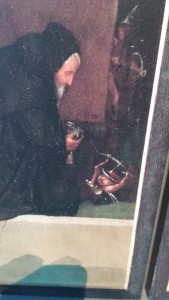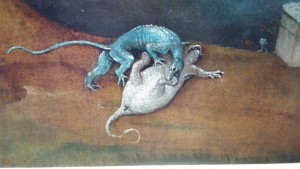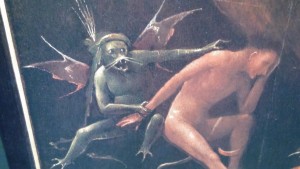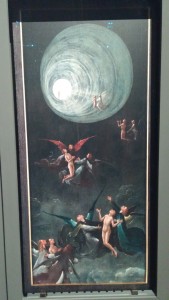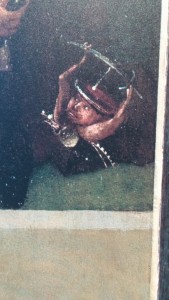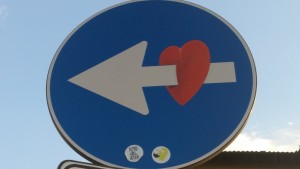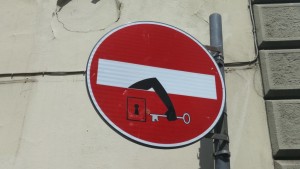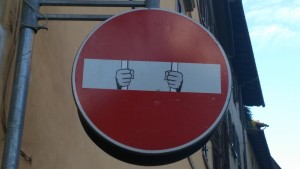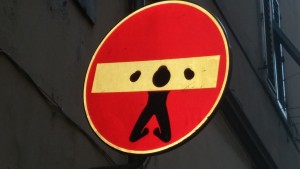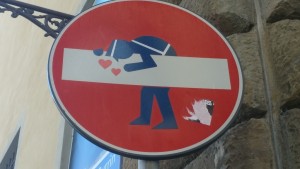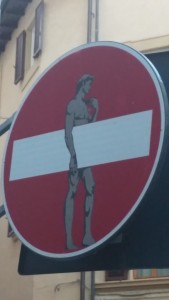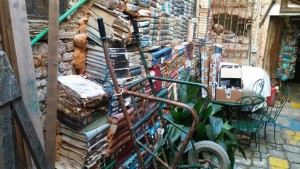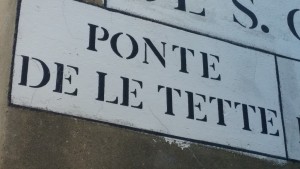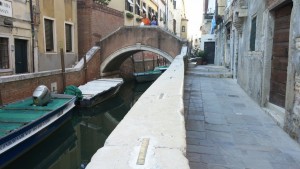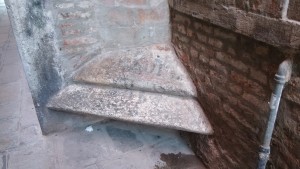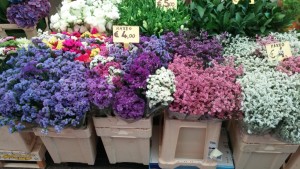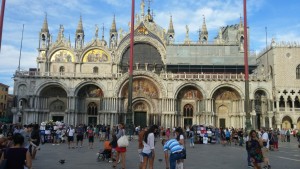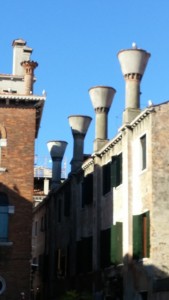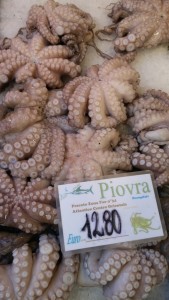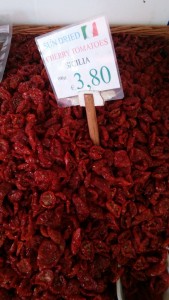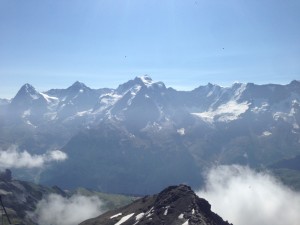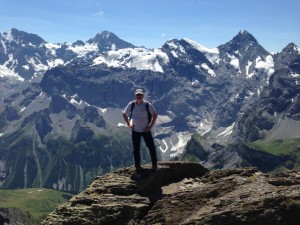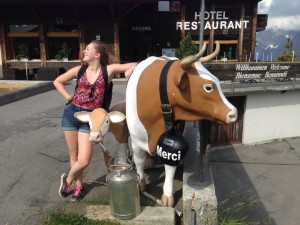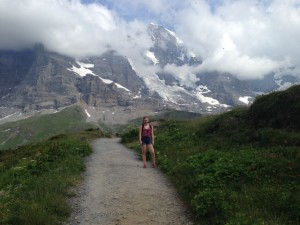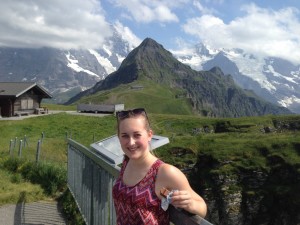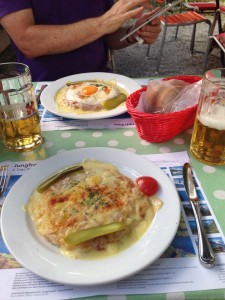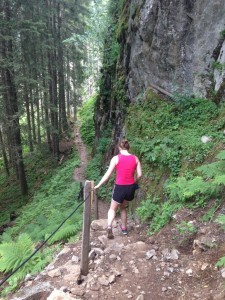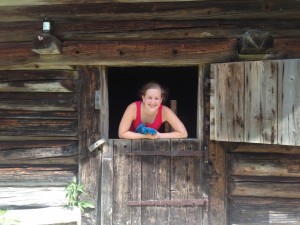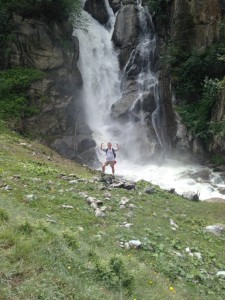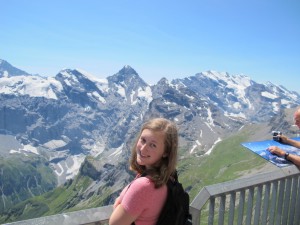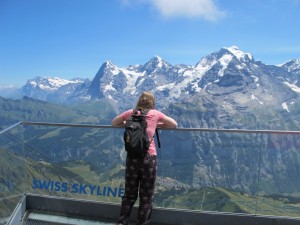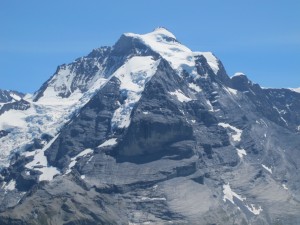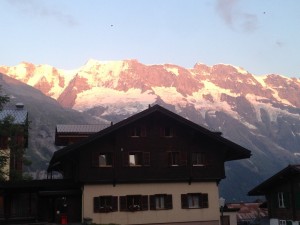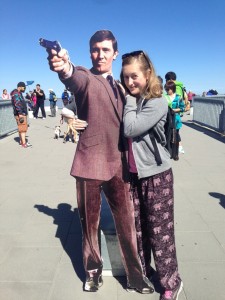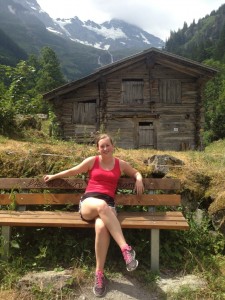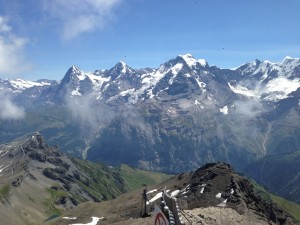We started our China adventure in the obvious place: Beijing. I was pleasantly surprised by this sprawling, gigantic metropolis. For starters, it is quite clean for a city, the infrastructure is excellent, and it doesn’t feel like a huge city. That is until one climbs a hill or tall building and get a near-360 view of skyscrapers (only a small exaggeration). There is security absolutely everywhere.
One passes bags through an x-ray machine to enter the subway or any train station, not to mention all the major sights. But the biggest surprise has to be chalked up to luck (or good travel karma?). Our first day here was very windy, which meant no smog. None. Blue skies for the 3 days we were here. Wow. Simply amazing. On our first two days we were able to tag along on Intrepid tours. We started early for our Discovery Beijing tour, meeting our guide William at the Temple of Heaven. This iconic building is as beautiful and impressive as its reputation suggests.
Perfectly round with concentric pagoda layers tapering up to a perfect apex, it is impressively large as well. Being there first thing, we had it largely to ourselves, which must be rare anywhere in China. The blustery cold weather probably helped some too. We were impressed by the detailed decorations and the bright colors used – something one doesn’t pick up in photos and tourist brochures. We learned that this was not a religious temple, but a political one where the emperor came annually to make sacrifices in hopes of a good harvest for the nation. Some of the lesser outbuildings were almost as impressive, had they not been overshadowed by the dominant, much larger ToH.
Next stop was Tianenman Square. We used the metro to wisk across town. It is an impressive system with 9-10 lines, clean and fast trains, orderly modern stations, and inexpensive fares. Tianenman, the largest public square in the world, is very impressive in its scale and communist-era propogandist architecture. We’ve observed that the Chinese love BIG!
The bigger the better. Also: blustery; grandiose; and flashy. But at least they are creative about everything, impressively so. We wandered through Tianenman (not a short sojourn) to the equally impressive entrance gate to the Forbidden City. The FS is the Ming version of propogandist architecture. The scale of this place is equally staggering.
Passing through gate after impressive fortified gate, one burrows down into the concentric layers of the palace complex where the emperor and his extended family and retinue of ministers and retainers resided. To describe it as a palace complex is far to unassuming. This is a fortified and subdivided city. We enjoyed the fresh air and blue sky as we passed from courtyard to courtyard, photographed ceremonial braziers, water vessels, and statues, jostled though mosh pits of Chinese tourists to snap photos of thrones and gilded interiors, and gazed in the windows of the dowager empress’ quarters and the mini-villages of the concubines’ residences. Even with low season crowds it was an enervating experience.
All in all, it was a pretty amazing first day in China. Big bang sights, a good guide, and blue skies.



